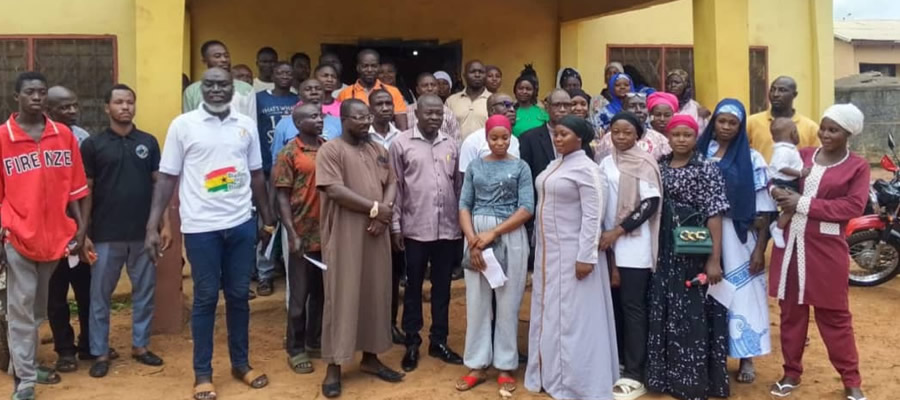

Introduction
Generally, population size, age and sex composition/distribution of every society have varied implications for development planning as far as socio-economic indicators such as health, education, transportation and overall welfare of the people are concerned. The objective of this chapter is to analyze the size, composition, age and sex structure of the population of EMD as captured by the 2010 PHC.
Population Size and Distribution
Table 2.1 looks at the age and sex composition of the population of East Mamprusi Municipal (EMD) as well as locality types. The 2010 PHC show that the District total population is 121,009 with 49 percent males and 51 percent females. A large number of the population 81,850 resides in the rural parts of the District with the remaining 39,159 in the urban areas.
Age-Sex Structure
The EMD has a youthful population structure with a broad base consisting of large numbers of children and a conical top of a small number of elderly persons (Figure 2.1). It is important to note that the population decreases with advancing age as in ages 0 to 59 years. The numbers however fluctuate from 59 to 69 years and assume a stable but decreasing pattern with advancing age.
It is also worthy of note that among the age group (0-19 years), the male population dominate the females. However, the reverse is the case from 20-99 years. This may be due to high levels of mortality among the male population between the ages 20-99 years. It could also be as a result of migration of the male population from the District to other districts in the region or to other regions for educational or economic purposes.
Migration
Migration is the geographic movement of people across a specified boundary for the purpose of establishing a new permanent or semi-permanent residence. Along with fertility and mortality, migration is a component of population change. The terms “immigration” and “emigration” are used to refer to moves between countries (international migration). The parallel terms “in-migration” and “out-migration” are used for movement between areas within a country (internal migration). Table 2.5 indicates that the District recorded 8,972 migrants. A total of 5,860 persons were born elsewhere in the region. For the population that was born elsewhere in the region, 25.3 percent have lived in their place of enumeration from 1-4 years and 25.2 percent have lived in their place of enumeration for twenty years or more.
A point worthy of note is that the Upper East Region (U/ER) recorded the highest number of migrants (1,369) in the District with the Western Region (W/R) recording the least number of migrants (36). The large number of migrants from the U/ER in the District may be as result of the close proximity of the Region to the District.
Chieftaincy successions in the District also reveal that significant number of paramountcies, sub-chiefs and divisional chiefs are under the Mamprugu Kingdom and hence the people could easily relate to those in the EMD. Their movement into the District could also be related to pull factors such as the availability of agricultural lands, the presence of the Baptist Medical Centre (BMC) in Nalerigu and the Health Assistants Training School (HATS) as well as other sectors of employment in the District. With regards to those born outside Ghana, 529 persons were recorded with 25.3 percent staying for 20 years and more.
Date Created : 11/18/2017 4:17:47 AM









 facebook
facebook
 twitter
twitter
 Youtube
Youtube
 +233 593 831 280
+233 593 831 280 0800 430 430
0800 430 430 GPS: GE-231-4383
GPS: GE-231-4383 info@ghanadistricts.com
info@ghanadistricts.com Box GP1044, Accra, Ghana
Box GP1044, Accra, Ghana